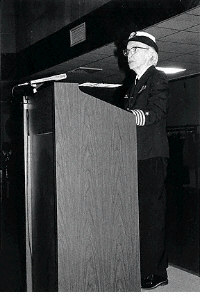|
|


 Konrad Zuse
Konrad Zuse
|
|
Software & Languages
Konrad Zuse began work on Plankalkul (Plan Calculus), the first algorithmic
programming language, with an aim of creating the theoretical preconditions for
the formulation of problems of a general nature. Seven years earlier, Zuse had
developed and built the world's first binary digital computer, the Z1. He
completed the first fully functional program-controlled electromechanical
digital computer, the Z3, in 1941. Only the Z4 -- the most sophisticated of
his creations -- survived World War II.

|
|
|
 John von Neumann
John von Neumann
|
|
Computers
John von Neumann wrote "First Draft of a Report on the EDVAC" in
which he outlined the architecture of a stored-program computer. Electronic
storage of programming information and data eliminated the need for the more
clumsy methods of programming, such as punched paper tape -- a concept that has
characterized mainstream computer development since 1945. Hungarian-born von
Neumann demonstrated prodigious expertise in hydrodynamics, ballistics,
meteorology, game theory, statistics, and the use of mechanical devices for
computation. After the war, he concentrated on the development of Princeton's
Institute for Advanced Studies computer and its copies around the world.

|
|
|
 Grace Hopper
Grace Hopper
|
|
People & Pop Culture
On September 9th, Grace Hopper recorded the first actual computer actual
"bug" - a moth stuck between the relays and logged at 15:45 hours on
the Harvard Mark II. Hopper, a rear admiral in the U.S. Navy, enjoyed
successful careers in academia, business, and the military while making history
in the computer field. She helped program the Harvard Mark I and II and
developed the first compiler, A-0. Her subsequent work on programming
languages led to COBOL, a language specified to operate on machines of
different manufacturers.

|
|
|

|
|
